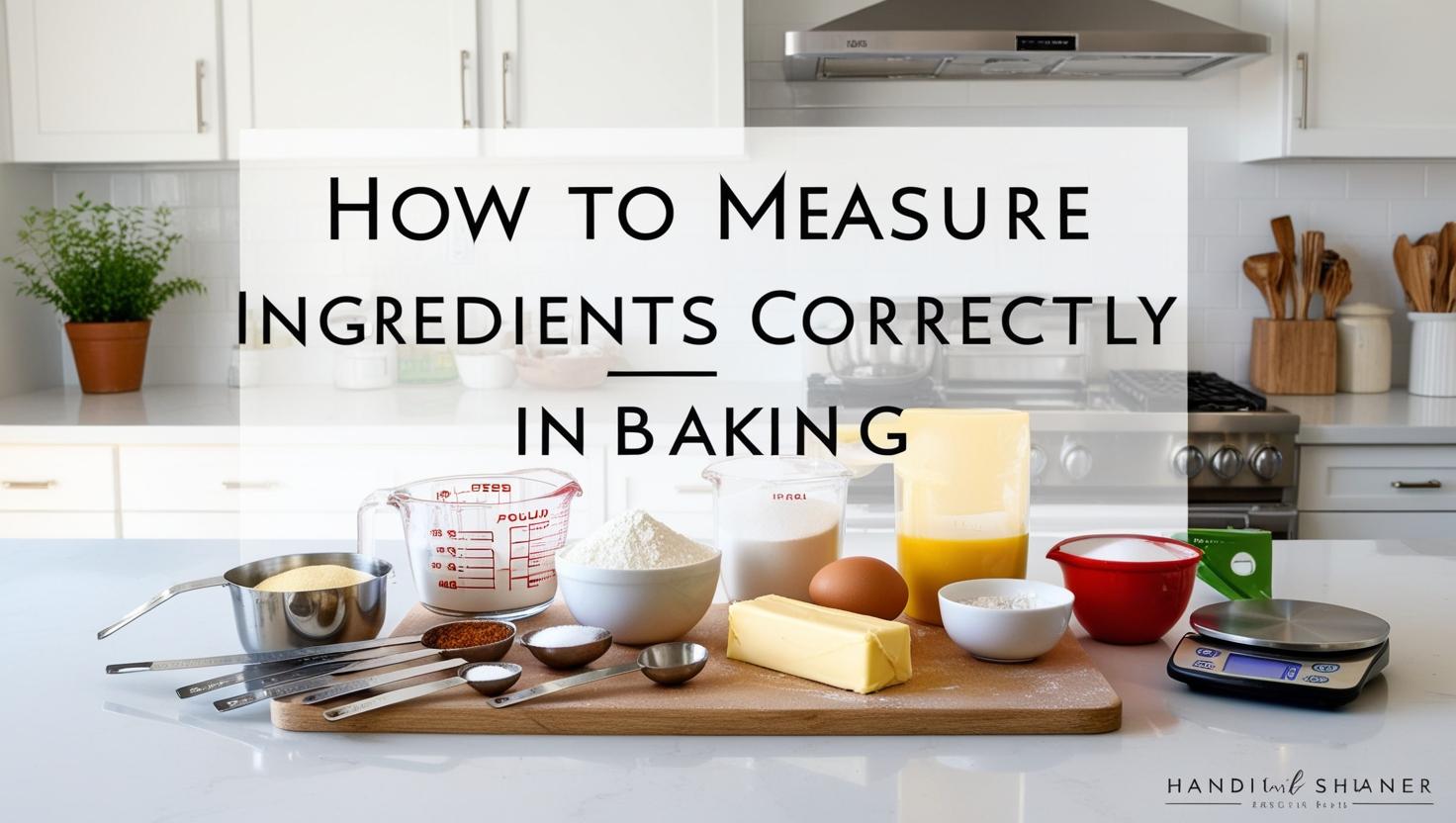In cooking, you can often improvise — but in baking, precision is everything. Measuring ingredients incorrectly is one of the most common reasons recipes fail, especially when it comes to desserts.
In this guide, you’ll learn how to measure ingredients properly, what tools to use, and why even a small mistake can make a big difference in your final result. Whether you’re baking cookies, cakes, or pies, these tips will help you achieve consistent, delicious results every time.
Why Accurate Measurements Matter in Baking
Baking is a science. Each ingredient serves a specific purpose, and the balance between them affects:
- Texture (fluffy vs. dense)
- Moisture (dry vs. gooey)
- Structure (stable vs. collapsed)
- Flavor (too bland or overly sweet)
Even adding a little too much flour or not enough baking powder can completely change your dessert.
Measuring by Volume vs. Measuring by Weight
There are two main methods of measuring ingredients:
1. Volume (Cups, Tablespoons, Teaspoons)
This is common in American recipes and very beginner-friendly.
Pros:
- Easy to use
- Doesn’t require a scale
Cons:
- Less accurate, especially for dry ingredients
- Can vary depending on how packed or loose the ingredient is
2. Weight (Grams, Ounces)
Used in most professional kitchens and preferred in international recipes.
Pros:
- Extremely accurate
- Consistent results
Cons:
- Requires a digital kitchen scale
💡 If you’re serious about baking, investing in a scale is one of the best decisions you can make.
How to Measure Dry Ingredients
Dry ingredients like flour, sugar, and cocoa powder can be tricky. Here’s how to do it right:
Measuring Flour (Volume Method)
Wrong way: Scooping the flour directly from the bag with your measuring cup. This compacts it and adds up to 30% more flour.
Correct way:
- Fluff the flour with a spoon.
- Spoon it into the measuring cup.
- Level off with a flat edge (like a knife).
Bonus tip: Sift the flour if the recipe calls for it after measuring, unless it says “sifted flour.”
Measuring Sugar
- Granulated sugar: Scoop and level. It packs evenly, so it’s not as sensitive.
- Brown sugar: Pack it firmly into the measuring cup unless the recipe says otherwise.
- Powdered sugar: Spoon and level gently. Don’t pack it.
How to Measure Liquid Ingredients
For liquids like milk, oil, and vanilla extract:
- Use a clear, liquid measuring cup with markings.
- Place it on a flat surface and check at eye level.
- Pour slowly to avoid over-measuring.
Tablespoons and teaspoons: Use accurate spoons, not everyday cutlery. Level off carefully.
Measuring Sticky Ingredients
For items like honey, syrup, or molasses:
- Grease your measuring spoon or cup lightly with oil or spray.
- This helps the sticky ingredient slide out easily, leaving less waste and a more accurate amount.
Measuring Butter
Butter can be tricky depending on where you live. In the U.S., sticks are marked with tablespoons. In other regions, it’s often in blocks.
Tips:
- Use the label on the packaging when possible.
- Otherwise, weigh it in grams or ounces.
- 1 stick of butter = 113g or 1/2 cup
Softened butter should be pliable but not melted. Melted butter should be measured in a liquid cup.
Measuring Eggs
Most recipes assume large eggs unless stated otherwise.
If a recipe is sensitive (like macarons or sponge cake), it’s best to weigh the eggs in grams. One large egg (without shell) usually weighs about 50g.
Bonus Tips for Measuring Success
- Always read the full recipe first. Some ingredients are listed “sifted” or “packed” for a reason.
- Don’t eyeball! Especially with baking powder, soda, or salt — small amounts matter.
- Level everything. Use a flat edge to remove excess from measuring cups/spoons.
- Practice consistency. Use the same measuring method throughout a recipe — don’t mix grams with cups unless the recipe allows it.
Final Thought: Mastering the Basics for Better Bakes
It may seem simple, but measuring correctly is one of the most important baking skills you can learn. With the right tools and a little care, you’ll save yourself from dry cakes, flat cookies, and dense brownies.
So before you dive into your next dessert recipe, double-check those measurements — because great baking starts with accuracy 🧁📏
